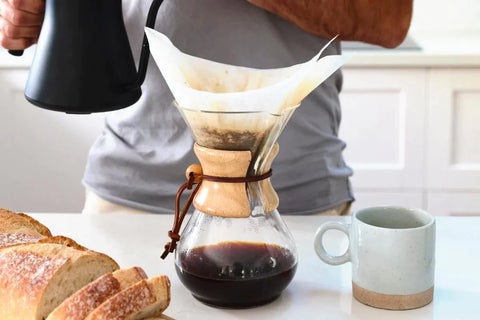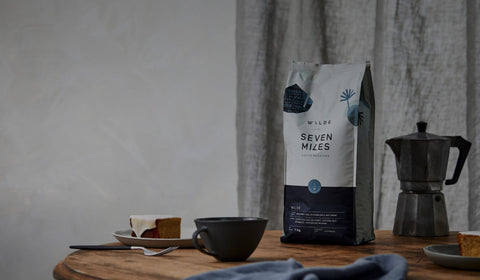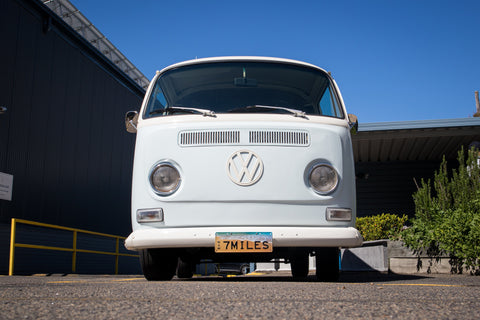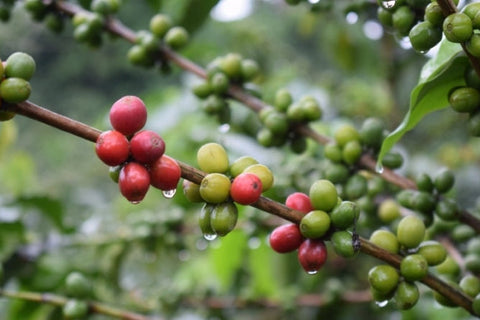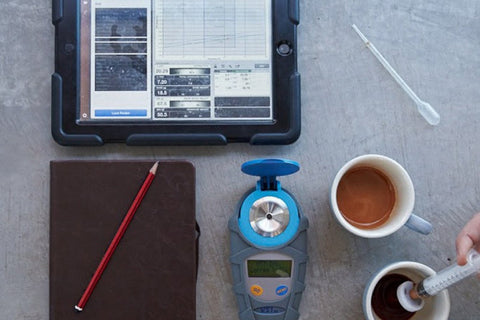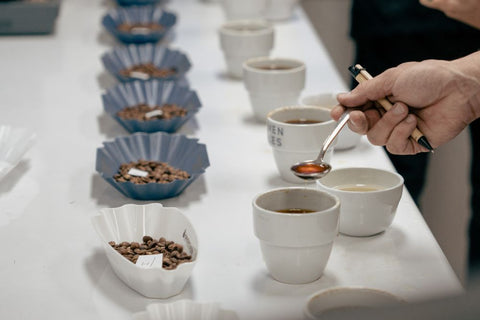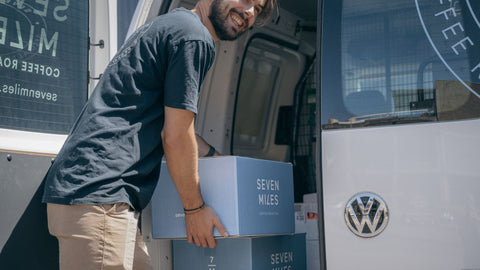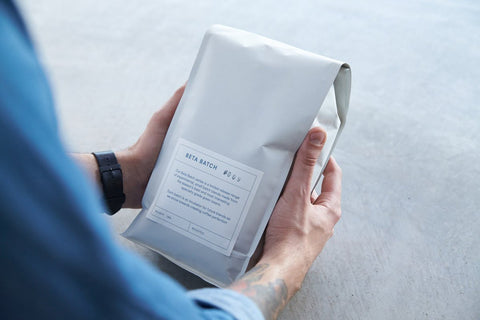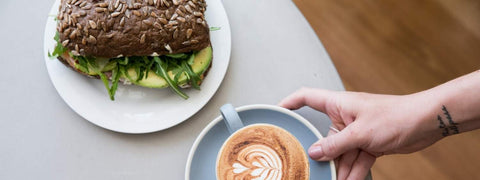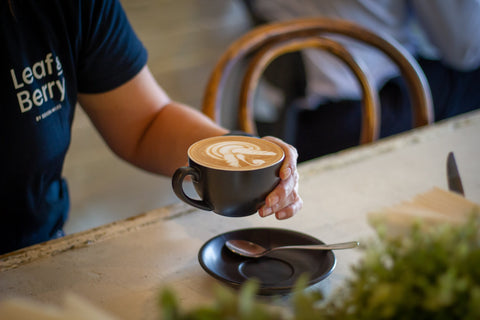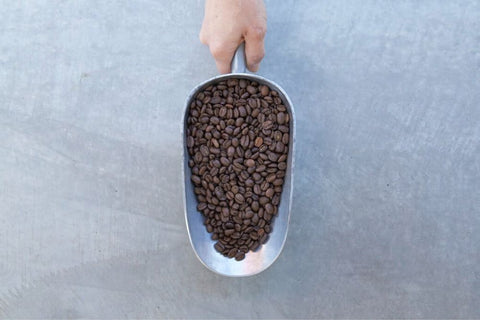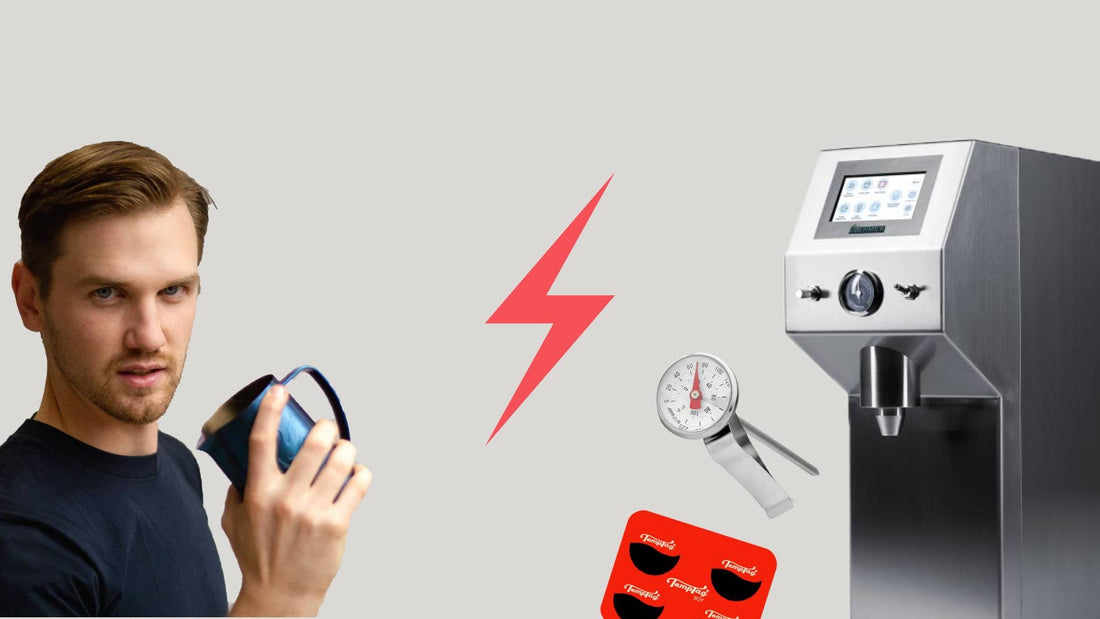Consistency is key. To what? A great coffee, of course! The consistency of milk temperature actually plays a huge part in how coffee tastes. Not only can it burn your tongue, but temperature also affects mouthfeel (how the coffee tastes and feels in your mouth as you drink it) as well as our ability to perceive sweetness and the unique flavour characteristics of each coffee.
With that in mind, our goal today is to find the most reliable way to get a consistent milk temperature.
What we tested
We were tasked with finding the most accurate and consistent way to heat the milk to a set temperature of 65°C, as we have found through tests of our own that 65°C is ideal for steamed milk. We used the UNI-T UT325, a digital thermometer, with a factory calibrated type-K thermocouple to accurately measure milk temperature during the tests. This was used as the benchmark of temperature accuracy. We had two baristas test each method multiple times each. The selected methods of heating were:
- Barista’s Hand
- Temptag
- Thermometer
- Ubermilk
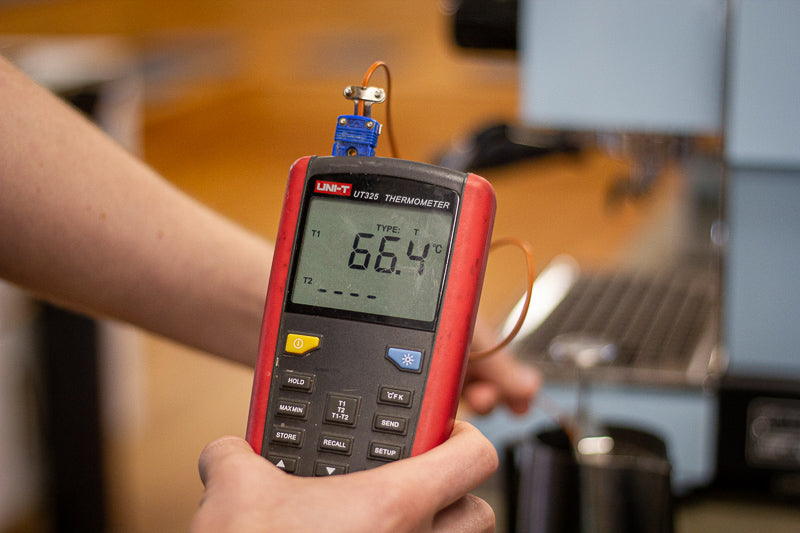
Test 1: Baristas Hands
The go to method when it comes to measuring milk temperature for baristas. The barista uses their experience and feel to determine the right moment to stop heating the milk. When measuring by hand, Barista A managed to achieve an average temperature of 62°C. Barista B, scored an average of 65.4°C. Whilst Barista B heated the milk more accurately to the desired temperature of 65°C, Barista A was more consistent when heating with hands. On average, between the two of the baristas, they were able to heat milk to within 3°C of the target temperature 95% of the time. This is important for later! 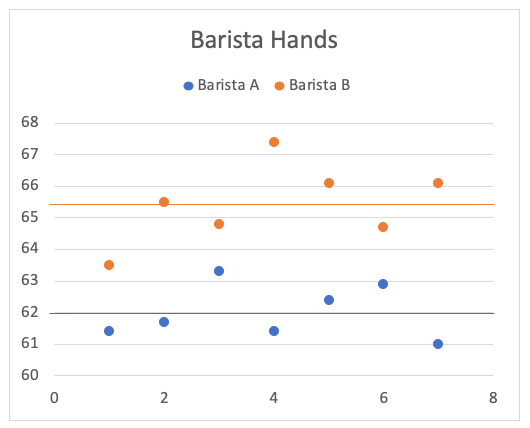 Did we expect to find results similar to this? Well, yes and no. One of the reasons for deciding to focus on milk temperature, is that we wanted to know just how consistent and accurate Baristas are when using their hands. As we note here, Barista A was more consistent in achieving when using their hands, however, not as accurate as Barista B at hitting the desired target of 65°C.
Did we expect to find results similar to this? Well, yes and no. One of the reasons for deciding to focus on milk temperature, is that we wanted to know just how consistent and accurate Baristas are when using their hands. As we note here, Barista A was more consistent in achieving when using their hands, however, not as accurate as Barista B at hitting the desired target of 65°C.
We would also add that we didn’t observe any significant ‘bias’ (or ‘hysteresis’ for all the scientists out there) over the multiple runs. In other words, we didn’t find that the baristas sense of feel made the results ‘creep up’ or ‘down’ over the course of the test. That said, we only did 7 tests back to back - our baristas hands are a precious thing…
Test 2: Temptags
Temperature stickers contain heat-sensitive liquid crystals which change colour when the milk reaches a certain temperature, in this case 65°C. We tested the Temptag brand to see how well these stickers work. Using the stickers, Barista A achieved an average milk temperature of 66.3°C. Barista B achieved an average milk temperature of 64.2°C. Neither barista had any previous experience with the Temptags, and were both very surprised at just how accurate they are. 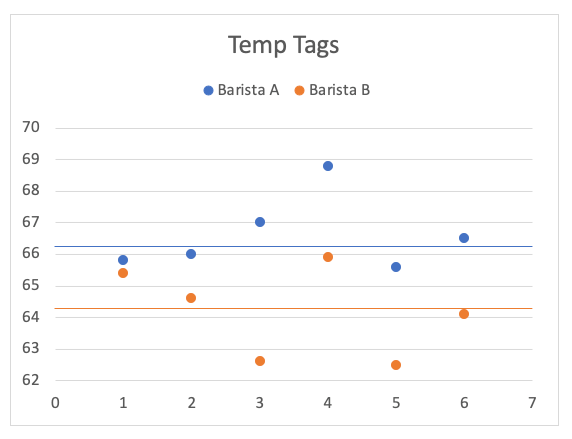
Test 3: Milk Jug Coffee Thermometer
Next up, was a good old-fashioned milk jug coffee thermometer. Barista A managed an average temperature of 67.3°C. Barista B achieved an average temperature of 67.5°. These temperatures were hit with an error of about 1.5°C. So, thermometers are a reliable and consistent source of gauging milk temperature. However, they do need to be calibrated frequently, as was evident from tasting it against our digital thermometer! 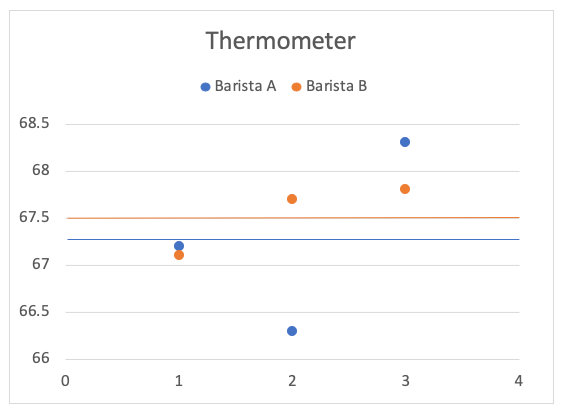
Test 4: The UberMilk
We’ve already written a full review of the Ubermilk, you can read it here. For those who haven’t come across it yet, the Ubermilk is an automated milk steaming machine. Yes, you press a button and out comes silky smooth steamed milk, ready to pour.  We initially tested the Ubermilk for seven runs, and found the first 5 runs to be inaccurate, as the heating element was heating up. So we went back to do a further 25 runs of the Ubermilk and got just what we were after. We found that, at steady state, the Ubermilk had an average temperature of 62.5°C, as shown below. The 95% confidence interval on these tests was about 1.5°C from the average – so no more than 65°C and no less than 61°C, 95% of the time.
We initially tested the Ubermilk for seven runs, and found the first 5 runs to be inaccurate, as the heating element was heating up. So we went back to do a further 25 runs of the Ubermilk and got just what we were after. We found that, at steady state, the Ubermilk had an average temperature of 62.5°C, as shown below. The 95% confidence interval on these tests was about 1.5°C from the average – so no more than 65°C and no less than 61°C, 95% of the time. 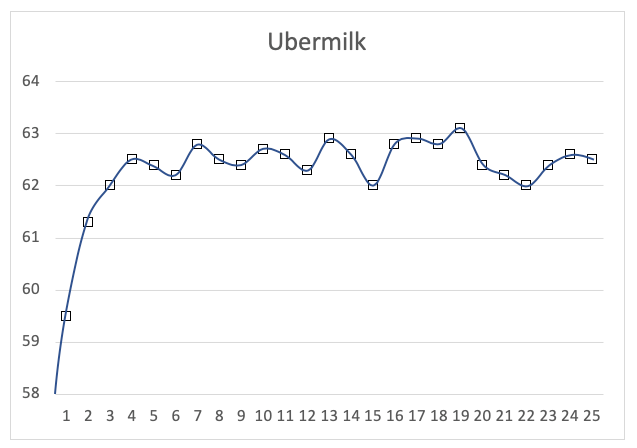 Now, from this information, we found ourselves asking, is 1-3°C that much of a difference that it would drastically alter the taste of your coffee? Let’s find out, shall we?
Now, from this information, we found ourselves asking, is 1-3°C that much of a difference that it would drastically alter the taste of your coffee? Let’s find out, shall we?
What is the ideal milk temperature for coffee?
We asked 5 people to taste 6 cups of coffee at 55°C, 57°C, 60°C, 62°C, 65°C and 67°C. We found that a desirable drinking temperature for 4 out of 5 people was between 60°C to 65°C. 5 out of 5 people preferred coffee served between 62°C and 65°C (as shown in our graph below). Interestingly, our tasters did notice that the ‘coffee’ taste was also most prominent between 60°C and 65°C. 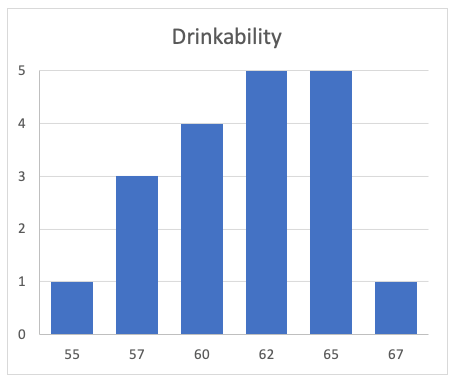 These indicate that, in an Australian setting, people will accept coffees within 3°C of 63°C. This is great, as ‘by hand’, baristas are able to hit this margin of error 95% of the time. That said, it means that 5 in every 100 coffees, your typical barista will heat the milk too hot or too cold. Assuming a standard distribution, this would mean a coffee is cold about 3 times in every 100. This doesn’t mean the other methods are without fault.
These indicate that, in an Australian setting, people will accept coffees within 3°C of 63°C. This is great, as ‘by hand’, baristas are able to hit this margin of error 95% of the time. That said, it means that 5 in every 100 coffees, your typical barista will heat the milk too hot or too cold. Assuming a standard distribution, this would mean a coffee is cold about 3 times in every 100. This doesn’t mean the other methods are without fault.
Other methods of milk temperature control will result in about 3 coffees in every 200 being too cold. Interestingly for the Ubermilk, though – as the average temperature is below the standard ‘target’ – we expect a temperature of 61°C to be considered ‘too cold’ for some consumers. And it will be this cold more frequently than if a barista was serving a coffee (targeting 65°C) under their standard variability. Perhaps the workaround, then, is to set the Ubermilk unit up a couple of degrees higher to compensate for this.
Conclusion
When it comes to reproducibility and accuracy, it is clear that the Uber Milk comes out on top. It is the most consistent when it comes to texturing milk and heating to a desirable milk temperature. The machine wins this round. The Temptags did very well. They were easy to use, easy to understand, and neat and tidy on the jug. Reproducibility for the Temptags comes down to the barista keeping an eye on the tags.
There were a few issues we found with this:
1) if baristas need to keep an eye on the tags for the right temperature, what would that mean for customer service?
2) It is still up to the barista to turn off the steam to reach the desired temperature.
When it came to baristas using their hands to measure accuracy and consistency, Barista A managed an average temperature of 62°C, with a standard deviation of 1.73°C, where as Barista B managed an average of 65.4°C, with a standard deviation of 2.51°C. When using the Temp Tags, Barista A managed an average temperature of 66.3°C, with a standard deviation of 2.29°C, Barista B got an average of 64.2°C, and a standard deviation of 3.14°C. Using the milk thermometers, Barista A’s average temperature was 67°C, with a standard deviation of 1.64°C. Barista B averaged 67.5°C, with a standard deviation of 0.76°C.
Overall, it was quite clear that the most efficient method of heating and texturising milk consistently and accurately was using The Ubermilk, which also happened to be my favourite way too, as it freed up more time for the baristas. The Temptags too were surprising and enjoyable to work with.
All methods were shown to be good in terms of heating to a temperature consistently. Moreover, whichever method you choose to use should result in a coffee of eminently drinkable temperature most of the time.
